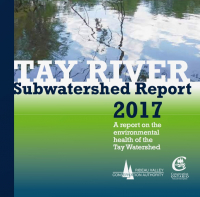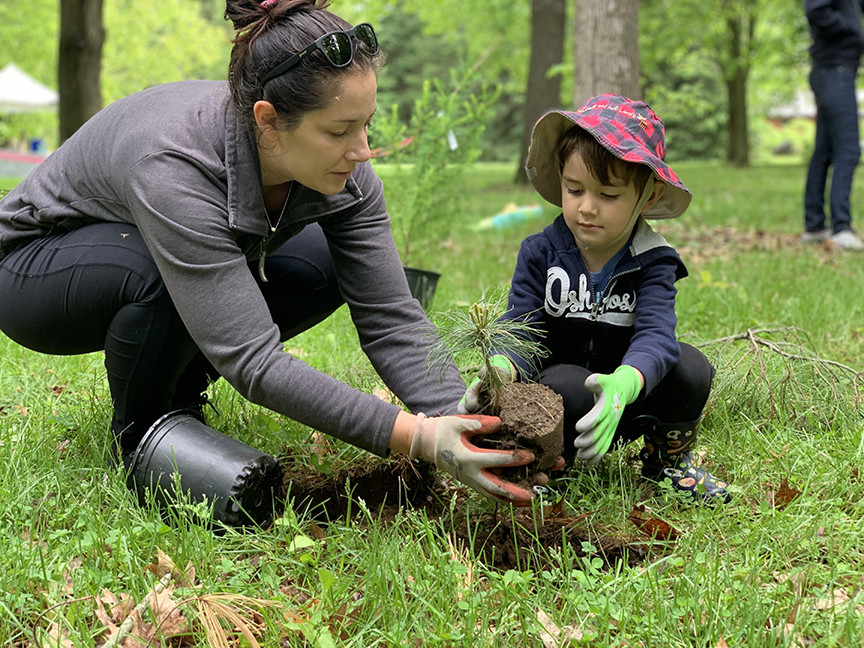RIDEAU WATERSHED, June 21, 2018 — How healthy is the Tay River? Readers can learn all about it in the Rideau Valley Conservation Authority’s (RVCA) Tay River Subwatershed Report. This information-loaded report summarizes the subwatershed’s health by looking at four indicators: forests, wetlands, shorelines and water quality. This is the second subwatershed report for the Tay River and compares baseline information collected from 2006 to 2017. Changes are small, but understanding how to prevent cumulative long-term changes is essential.
The Tay River begins its journey at Carnahan Lake, south of the Town of Sharbot Lake. From there it meanders northeast, draining water from 55 lakes into the Lower Rideau Lake at Port Elmsley. Along its way, the Tay flows through the Canadian Shield that defines many of the lakes in the area, including Long, Eagle, Crow and Bobs Lakes. From here downstream, the Tay takes on a more river-like form as it flows towards Christie Lake, before beginning the long descent through rich farmland and the Town of Perth to where it empties into Lower Rideau Lake.
RVCA’s monitoring efforts help us better understand watershed trends and help focus stewardship activities where they are needed the most. These subwatershed reports summarize RVCA information and are valuable tools for decision-makers at all levels — individuals, families, municipalities, counties and the province.
Conditions along the Tay River have remained similar to past years; however, now is always the best time to take steps to maintain, protect and improve our watershed conditions.
Efforts can be simple things like keeping shorelines natural and planting trees to more complicated municipal planning and development projects that protect surface water quality and aquatic habitat through the creation of riparian buffers, and application of stormwater best management practices. The report identifies what the RVCA, municipalities, residents, businesses, community groups and agricultural associations can do to help make environmental gains.
For landowners looking to do their part, the RVCA provides a number of stewardship programs designed to improve watershed health. The programs provide technical expertise, grants and manpower. By connecting with landowners, the goal is to make real, on-the-ground improvements. Landowners who are interested in learning about possible projects can call the RVCA for details.
This report is part of a series including reports on the Lower Rideau (2012), Kemptville Creek (2013), Rideau Lakes (2014) and Middle Rideau (2015) and Jock River (2016), Next year, similar comparisons on watershed health will be made for the Lower Rideau Subwatershed.
For your copy of this and other subwatershed reports, call the RVCA at 613-692-3571 ext. 1177 or visit watersheds.rvca.ca. For those looking for more scientific information, monitoring results will be available online this fall through the Tay’s 14 catchments reports.
















